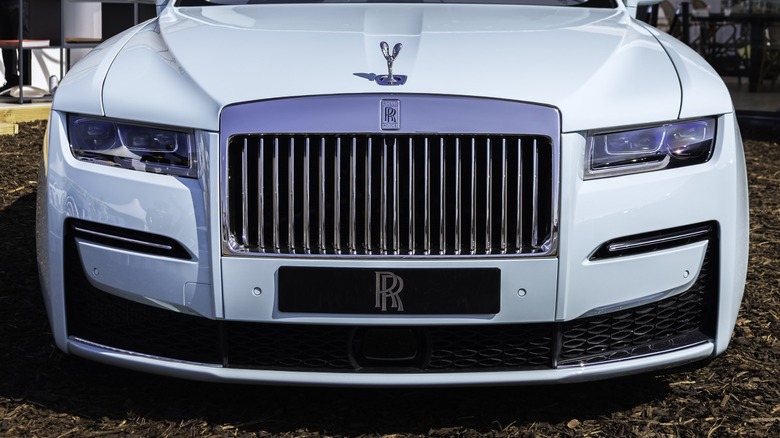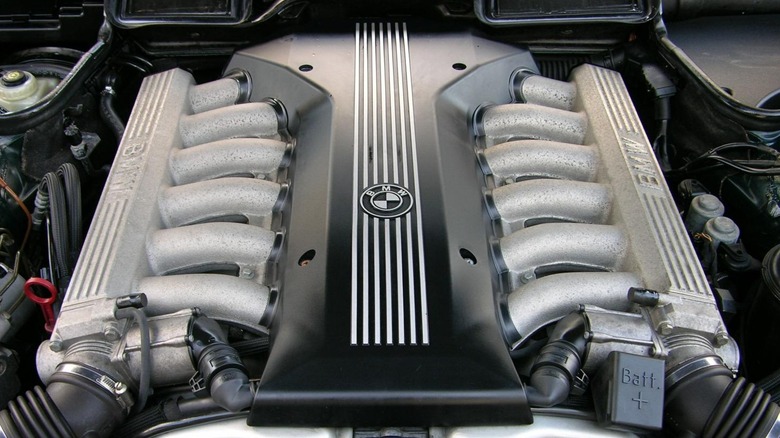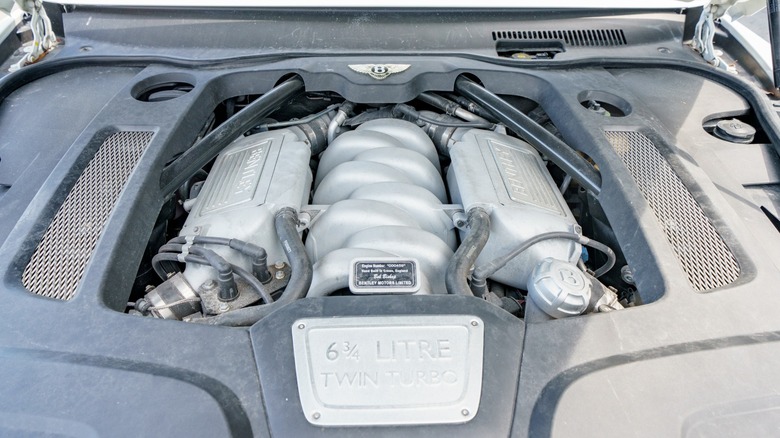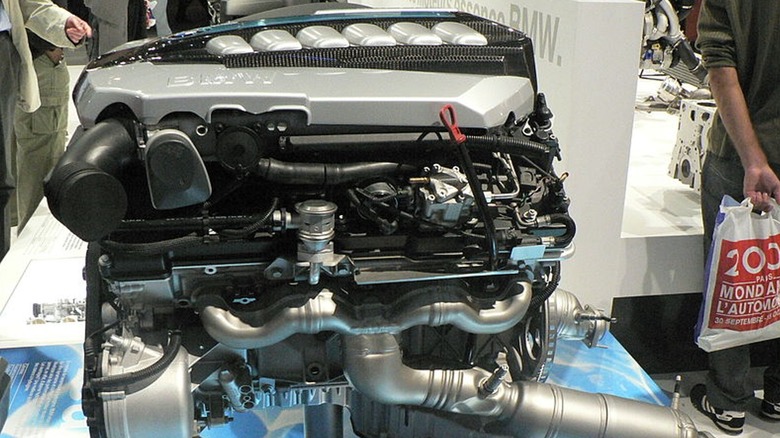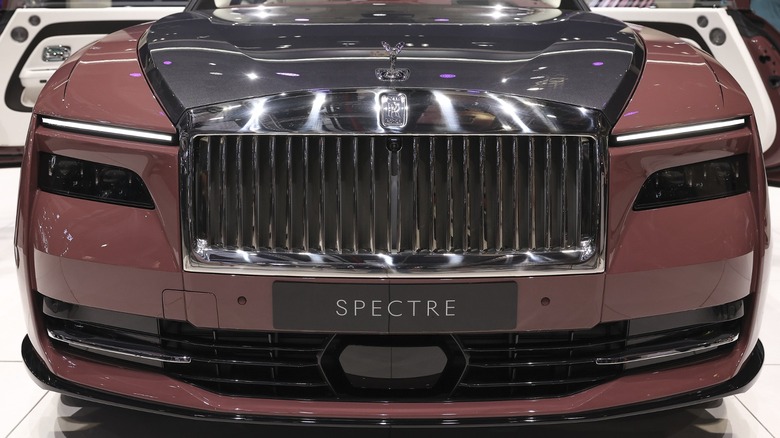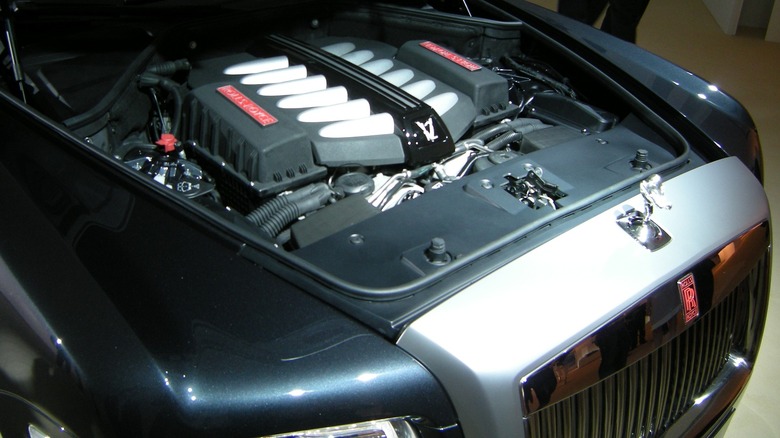5 Of The Most Powerful Rolls-Royce Engines Ever Built
When it comes to luxury car brands, Rolls-Royce is right near the top of the list, with many iconic, expensive Rolls-Royce models stretching back through history. Today, the company still makes exclusive cars that cost hundreds of thousands of dollars, like the Rolls-Royce Spectre (the company's first EV) and the $465,000 Cullinan SUV.
One of the rules for driving (or owning) a Roll-Royce is that smoothness is more important than power. Engine output has never been the focus of the brand, and for many years, Rolls-Royce didn't even publicize its horsepower numbers. It's easier to find the power output of Rolls-Royce cars today, especially since many of their latest models are now BMW-powered.
For this list, we'll only be focusing on passenger car engines. Rolls-Royce's history also includes lots of aircraft engines, such as the Merlin engine that powered many Allied planes during World War II. However, we won't be discussing any of those today. With that in mind, here are five of the most powerful Roll-Royce automobile engines ever built.
BMW M73 Engine
Although Rolls-Royce is a British company, it was acquired and split up by two European competitors — BMW and Volkswagen — in the late 1990s. In essence, BMW eventually acquired the Rolls-Royce name, and Volkswagen acquired Bentley.
From 1998 to 2002, Rolls-Royce produced the Silver Seraph saloon and its long-wheelbase variant, Park Ward. These models were the first Rolls-Royce cars to feature a BMW engine, the V12 BMW M73 engine on the top-trim BMW 750i E38. The M73 is a naturally-aspirated 5.2-liter single overhead camshaft engine that puts out 322 hp at 5,000 rpm and 361 lb-ft of torque at 3,900 rpm. Both cars also featured the same ZF 5HP30 five-speed automatic transmission with Steptronic, so their powertrains should feel similar.
However, given that the Silver Seraph is a Rolls-Royce with more luxurious features, it weighs almost half a ton more than the 750i E38. This means it will be slightly slower than its BMW cousin, but that's no issue. After all, Rolls-Royce isn't really about speed or performance, but rather opulence and refinement.
[ Featured Image by The Car Spy via Wikimedia Commons | Cropped and scaled | CC BY 2.0 ]
Rolls-Royce-Bentley L-Series Engine
In 1959, Rolls-Royce introduced the L-Series engine, which subsequently went into continuous production until 2020. This 60-plus-year production run, with over 36,000 engines made, shows the longevity and reliability of the motor, as well as the engineering excellence that Rolls-Royce and Bentley put into designing and producing it.
Because of its long production run, the L-Series engine was used in many iconic Rolls-Royce cars, like the Silver Shadow and the Corniche V Convertible. The 1959 Silver Cloud II was one of the first Rolls-Royce models to get this motor, producing 185 hp at 4,000 rpm and 339 ft-lb of torque at 2,200 rpm. The last Rolls-Royce to feature it, the Corniche V, received a turbocharged variant of the 6.75-liter V8 that produced 325 hp at 4,000 rpm and 544 ft-lb of torque from 2,100 to 2,300 rpm, making it the most powerful version of the L-series engine in a Rolls-Royce.
The last L-Series rolled off the factory floor in 2020 in a Bentley Mulsanne. However, because of the Rolls-Royce-Bentley split in 2003, the 2002 Corniche was the last Rolls-Royce model to get it.
BMW N73 Engine
After BMW dropped the L-Series engine from Rolls-Royce in 2002, V12 motors continued as the standard for the brand. When BMW introduced the Phantom VII in 2003, it used the BMW N73 engine, the successor to the M73 engine used in the Silver Seraph.
Just like the older engine, the N73 is also used in the top-end BMW 760i E65. However, the BMW only received a 6-liter version of the motor, while the Phantom VII enjoyed a bigger 6.75-liter variant. The Rolls-Royce version of the N73 is a naturally-aspirated V12 engine with 453 hp at 5,350 rpm and 531 ft-lb of torque at 3,500 rpm.
The engine is mated to the Rolls-Royce with a six-speed ZF 6HP32 transmission. This powertrain allowed the Phantom VII to go from 0 to 60 in 5.3 seconds and finish the quarter mile in 13.9 seconds. It also has a 156 mph top speed, and you get all this performance (and comfort) despite the car weighing almost two and a half tons.
[ Featured Image by Ton1~commonswiki via Wikimedia Commons | Cropped and scaled | CC BY-SA 3.0 ]
BMW eDrive Motor
Rolls-Royce is following suit as the automotive industry slowly shifts its focus from gasoline-powered cars to EVs. While other luxury EVs like the Porsche Taycan, the BMW i7, and the Mercedes-Benz EQS have been on the market for a few years, Rolls-Royce took its time in launching its first EV, the Spectre.
The Spectre stands out from the other luxury EV models on the market because it comes in a two-door coupe model. It uses two BMW EESM electric motors, outputting 577 hp and 664 lb-ft of torque. You can find a similar motor in the BMW iX M60, which uses two motors but has a higher output of 610 hp and 811 lb-ft of torque. Nevertheless, the Spectre can still go from zero to 60 in 4.4 seconds. So, even if the Rolls-Royce Spectre focuses on comfort over acceleration, you can still go blazingly fast if you want to.
BMW N74 Engine
The N74 is BMW's last V12 gasoline engine, with the final BMW model to get the engine having come out in 2022. However, Rolls-Royce models still use this engine. You can find the most powerful form of the BMW N74 engine in the 2024 Rolls-Royce Wraith, with the model getting a twin-turbocharged 6.6-liter V12 version.
This engine outputs 624 hp at 5,600 rpm and 590 lb-ft of torque in the base variant of the Wraith. The horsepower remains the same in the Black Badge variant of this coupe, but you get a bump in torque to 642 lb-ft. If you long for a BMW V12 engine in the age of hybrids and EVs, your best option may be to get a Rolls-Royce — and you'd better do it soon, as the company announced it will be going completely electric by 2030 when it confirmed the Spectre EV.
[ Featured Image by The Car Spy via Wikimedia Commons | Cropped and scaled | CC BY 2.0 ]
